Free Falling!
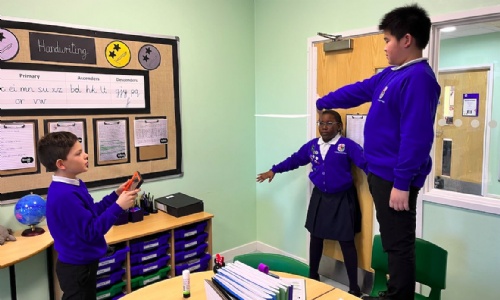
In year 5, we have been learning about air resistance.
Our curriculum vision statement for Science is:
Be academic.
Be curious.
Be practical.
This week, we have been practical and participated in a number of investigations. We have been academic by recording the results of our investigations to draw conclusions.
To continue our topic on forces, we looked at air resistance. This continued our learning about friction as we looked at forces which slowed objects down. To begin with, we looked at how bicycles and the clothing of professional cyclists work. We discussed how air resistance slows things down, so if we want to go fast we need to be more aerodynamic. Children annotated the bike and the cyclist to show how it was more aerodynamic and streamline.
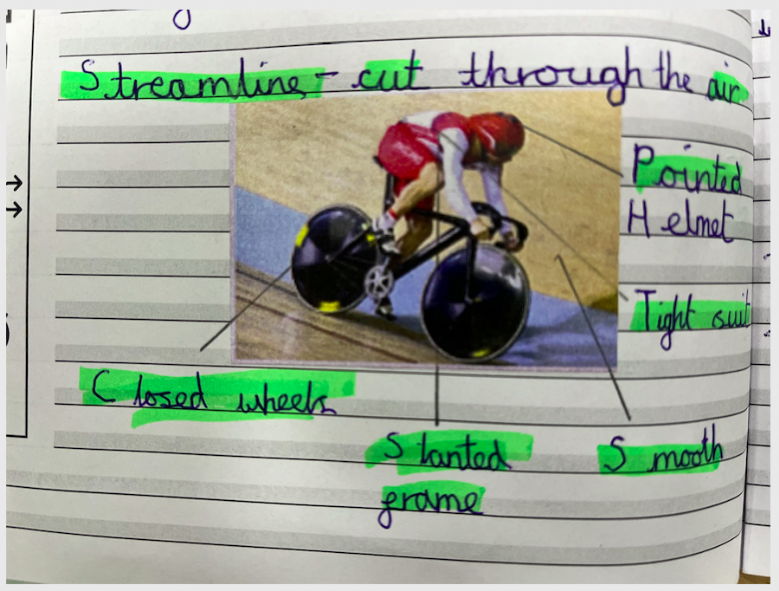
We then conducted two experiments looking at how surface area affects air resistance. The first test was running with two different sized papers and observing what happened to the papers when running and how they felt.
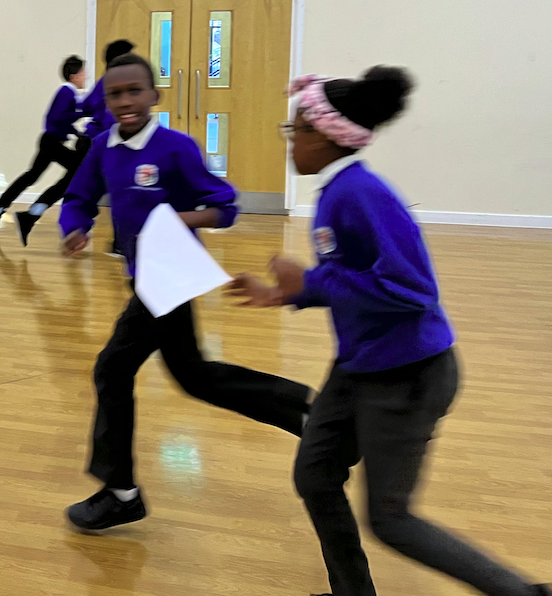
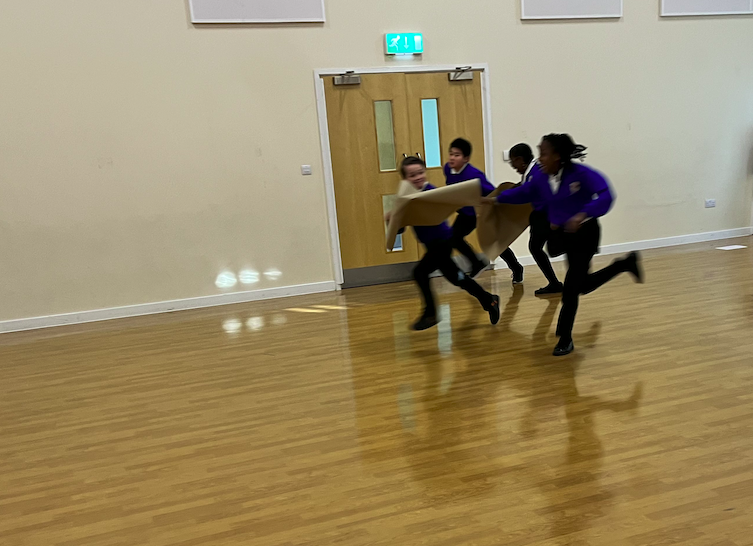
Children noticed that the bigger sheet was 'pushed back' more showing more air particles against it when running. It was harder with the bigger sheet compared to the smaller sheet.
After the children had started to observe that the size of the surface area of an object had an effect on air resistance, we then conducted our second investigation. Children got reliable data for this investigation, which helped solidify their understanding. In groups, children had to scrunch up one piece of A4 paper and leave one piece flat. To make sure it was a reliable test, children kept to the same roles, so we did not change more than one variable. Standing on a chair, a child would drop the piece of paper and time how long it took to reach the ground. They did this three times and then took the average time. After doing this with the flat piece of paper, they did it with the scrunched up piece of paper.
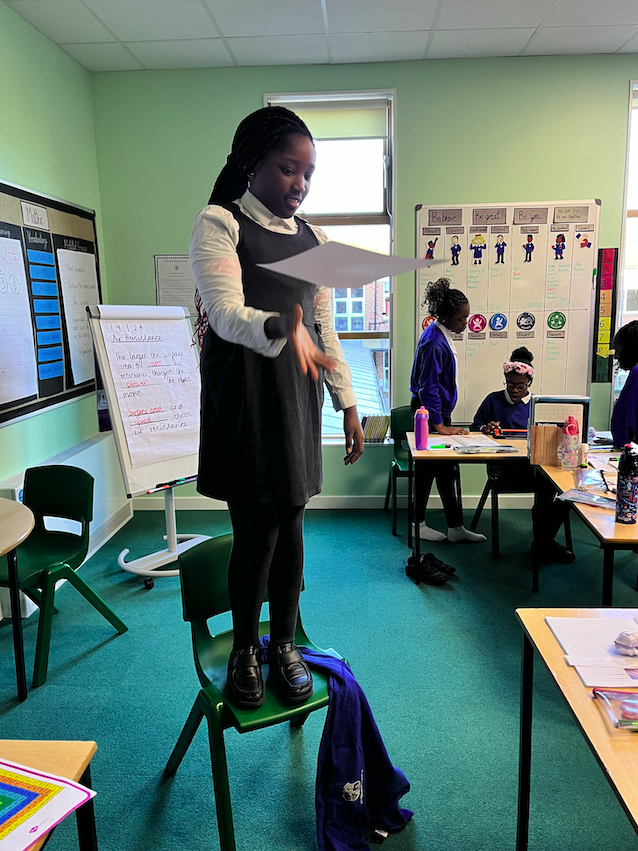
Through their conclusion, children learnt that the larger the surface area, the more air resistance and, therefore, the slower the object moves.
Have a look at our results:
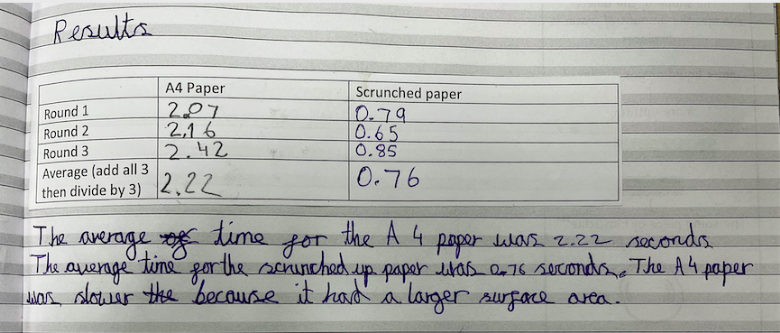
Here are some examples of the learning from a very exciting lesson.
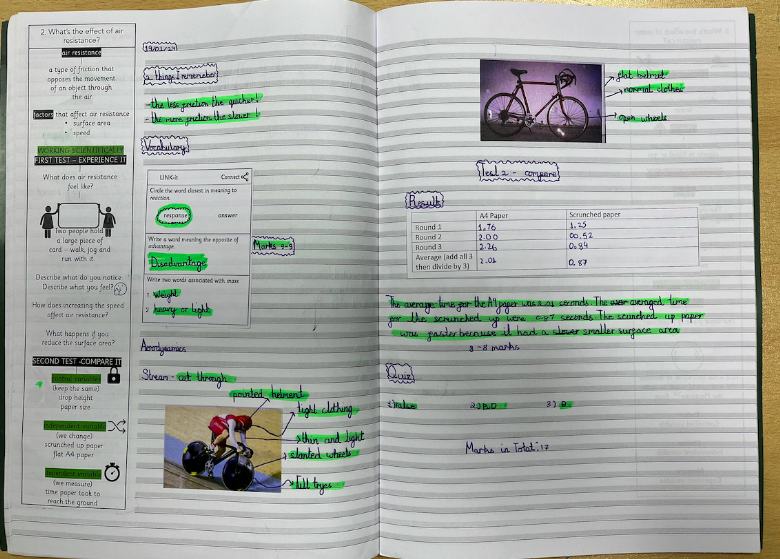
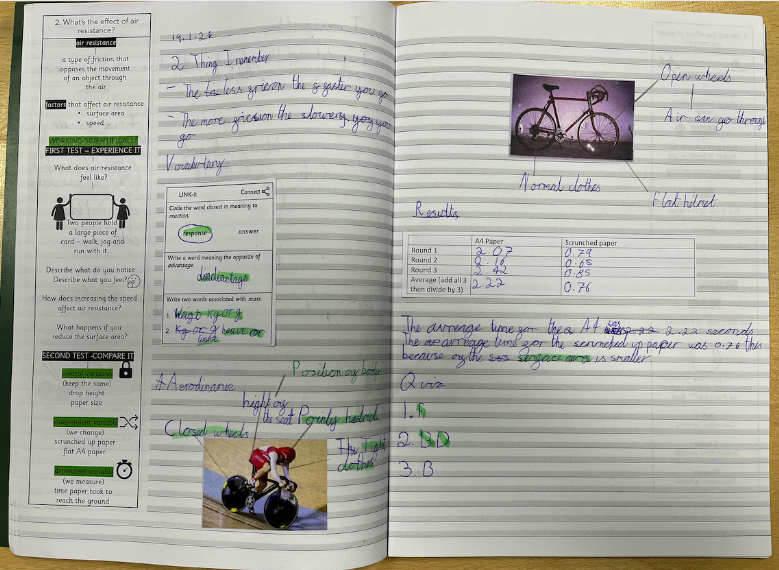
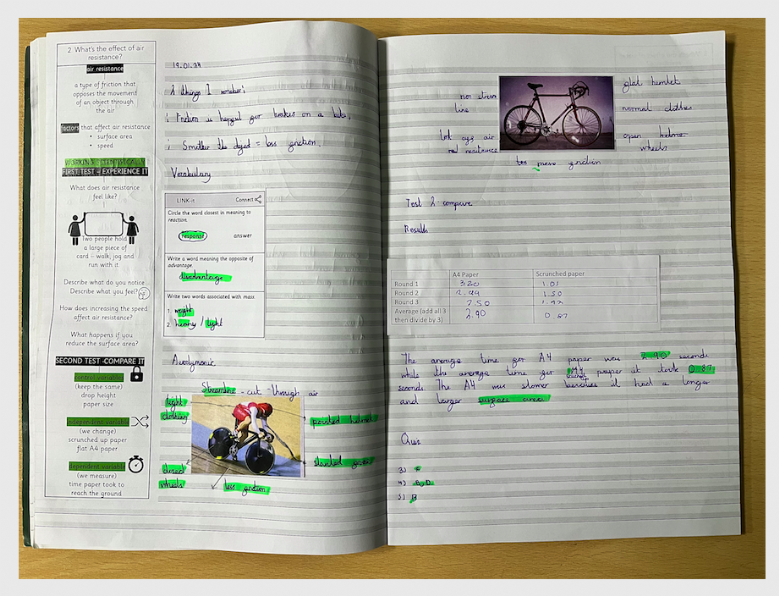
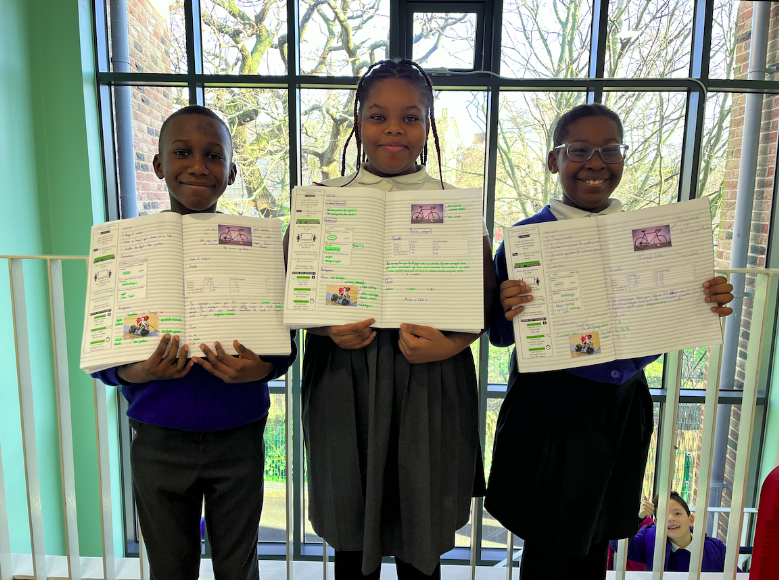
We look forward to continuing our learning on forces, where we will be investigating water resistance.
